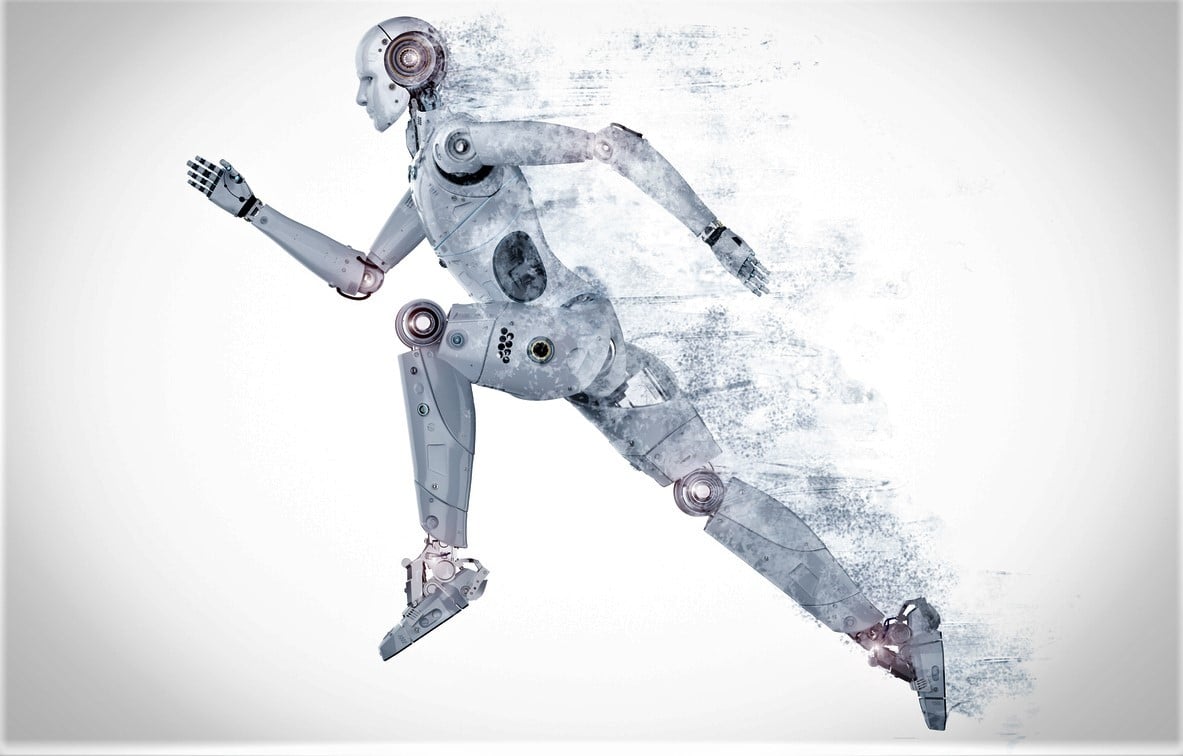Search the latest and greatest job opportunities in sport
 Artificial intelligence is a broad concept. At its core, it involves designing machines that, like humans, are capable of acquiring knowledge and information to solve problems. It encompasses data analytics, predictive analysis, machine learning, pattern recognition and, at the very least, a simulation of sentience (we’ll leave existential questions of consciousness for another day). From a sports perspective, we are witnessing something of an ‘AI revolution’. AI is beginning to permeate all aspects of the sports industry (and will continue to do so), raising interesting questions around the need for AI-specific regulations and ultimate ‘ownership’ of the vast swathes of data these technologies collect.
Artificial intelligence is a broad concept. At its core, it involves designing machines that, like humans, are capable of acquiring knowledge and information to solve problems. It encompasses data analytics, predictive analysis, machine learning, pattern recognition and, at the very least, a simulation of sentience (we’ll leave existential questions of consciousness for another day). From a sports perspective, we are witnessing something of an ‘AI revolution’. AI is beginning to permeate all aspects of the sports industry (and will continue to do so), raising interesting questions around the need for AI-specific regulations and ultimate ‘ownership’ of the vast swathes of data these technologies collect.
The capabilities of AI, combined with recent developments of wearable technology, RFID (radio-frequency identification) tags and machine learning, mean we are now able to monitor an athlete’s health, movement and performance like never before.
Second Spectrum is a prime example – the technology has transformed the way basketball players’ movement can be tracked and analysed by combining big data with pattern recognition. Its machine intelligence collects mass amounts of raw data on player movements, decisions and tactics from a live video feed. From here, it identifies patterns and variations with such precision that it can accurately determine: the likelihood of a player shooting; the quality of the shot; the likelihood of shot success; the likelihood of a rebound; and so on. All the while it factors in differentials such as whether it’s a good shooter taking a bad shot, or a bad shooter taking a good shot. Almost every NBA team now utilises this software.
 Coupled with wearable tech, AI can also allow athletes to improve their skills, mental preparedness and physical conditioning. Wearables such as Catapult and Zephyr are now commonplace on the training ground, directly measuring key physiological inputs (such as breathing, heart rate and impact) to deduce secondary parameters (such as explosiveness, peak force and heartrate recovery). AI applications then communicate this data back to the athlete to create a ‘quantified self’, which provides the basis for a personalised training schedule.
Coupled with wearable tech, AI can also allow athletes to improve their skills, mental preparedness and physical conditioning. Wearables such as Catapult and Zephyr are now commonplace on the training ground, directly measuring key physiological inputs (such as breathing, heart rate and impact) to deduce secondary parameters (such as explosiveness, peak force and heartrate recovery). AI applications then communicate this data back to the athlete to create a ‘quantified self’, which provides the basis for a personalised training schedule.
AI is able to make tough calls the human eye can’t always see. We are all aware of ‘Hawk-Eye’ technology in tennis, and that same technology powers goal-line technology in soccer. In the latest development in this area, gymnastics fans will be interested to hear that the FIG, the international gymnastics federation, plans to use AI to help judges score at the 2020 Olympic Games in Tokyo. The AI system (developed by Fujitsu ) will process data collected via 3D sensors to give an overall score, in an effort to counteract any inherent subjectivity among the judging panel.
AI is also playing an increasing role in the broadcasting process by automating certain tasks, analysing video and preparing audiovisual assets to be shown in real-time. In 2018, IBM taught the Watson supercomputer to recognise player emotions and crowd noise to help sift through video clips and identify key moments of the Wimbledon tennis championships, which it was then able to serve up via its AI highlights solution.
 Further, new ‘brand-tracking’ solutions are changing the way brands can measure their video marketing efforts. AI image recognition technology tracks brand coverage across a range of media, allowing sports sponsors to build a ‘big data’ picture of the efficiency, quality and exposure of their marketing campaigns.
Further, new ‘brand-tracking’ solutions are changing the way brands can measure their video marketing efforts. AI image recognition technology tracks brand coverage across a range of media, allowing sports sponsors to build a ‘big data’ picture of the efficiency, quality and exposure of their marketing campaigns.
The main regulatory touchpoint for AI is data privacy law. As AI solutions invariably log vast amounts of data to operate, this often involves processing certain quantities of ‘personal data’.
Under EU law for example (which also applies more widely to global companies who come into contact with EU data), in the absence of specific circumstances (such as where the individual has given their explicit consent), data subjects have a right not to be subject to decisions based solely on automated processing.
Where automated decision making and/or profiling does occur, this fact must be disclosed to the athlete (or other data subject) together with information about the ‘logic’ involved and the intended results of processing. There are also higher levels of protection afforded to “special” categories of data that are processed by AI (such as ‘biometric’ or ‘health’ data collected by wearable tech). Special data can only be collected, processed and stored anonymously, or else after obtaining the data subject’s explicit consent to the processing.
Much of the ongoing legal debate in this area revolves around ownership of and access to data. If a club is using a particular technology to collect large quantities of physiological information on its players, for example, who owns that data? Is it the club itself; the player (as the data subject); the league or sporting governing body (if the device is part of a wider initiative); or perhaps the company providing the technology?
What are the specific rights and obligations on each of these stakeholders when they come into contact with the data? AI companies should be wary of a business model that relies heavily on the collection and monetisation of personal data while these issues remain unclear.
Various leagues and governing bodies have issued regulations on the adoption of wearable tech recently.
Schedule 3 of the World Rugby Handbook, for example, sets out several mandatory requirements around the use of ‘player monitoring devices’. The specifications are made “without seeking to compromise the form or appeal of the game and with the overall goal being to promote player welfare and reduce the risks of injuries to players as far as practicable.”
Fifa, on the other hand, dictates that where electronic performance and tracking systems (EPTS) are used in matches played in an official competition, they must contain certain insignia, cannot be dangerous, and any information transmitted is not permitted to be received or used in the match area during a live game.
Artificial intelligence continues to strengthen its foothold in the sports industry and provides exciting opportunities for fans, players, brands and software companies alike. But with seemingly unfettered growth come fresh uncertainties for AI.
Regulators are scrambling to keep up with the continually shifting technological goalposts, and key legal and ethical questions concerning the data collected remain unanswered. AI technology could be marked more tightly in years to come.
This article was published by our partner Sportcal and you can view the original article here.
Search the latest and greatest job opportunities in sport
In the world of professional sports, sponsorship represents a significant source of revenue and plays a vital role for t...
Read moreThe sports industry is a vibrant and multifaceted industry, made up of a diverse range of sectors that shape its global ...
Read morePablo Romero, director of protocol at Sevilla FC and lecturer in the UCAM Master's Degree in Sports Management, shares t...
Read more